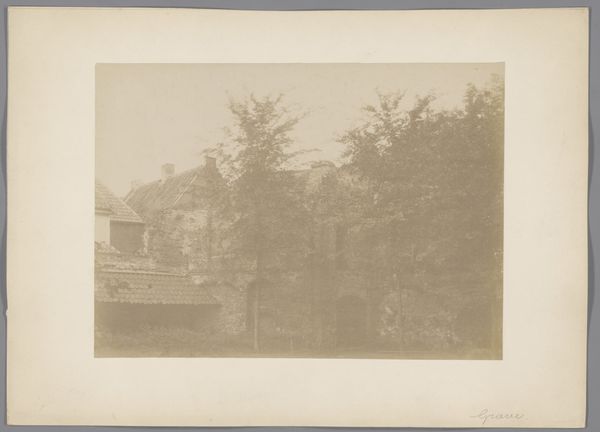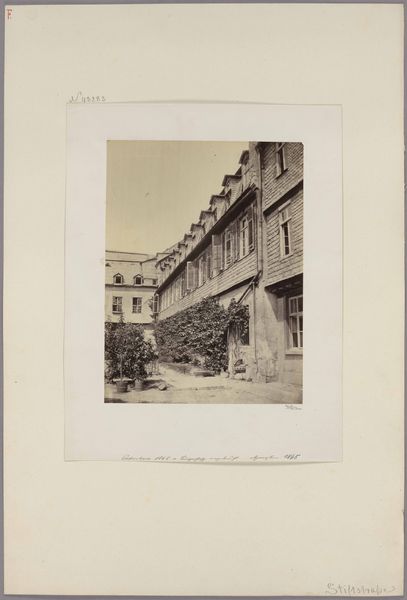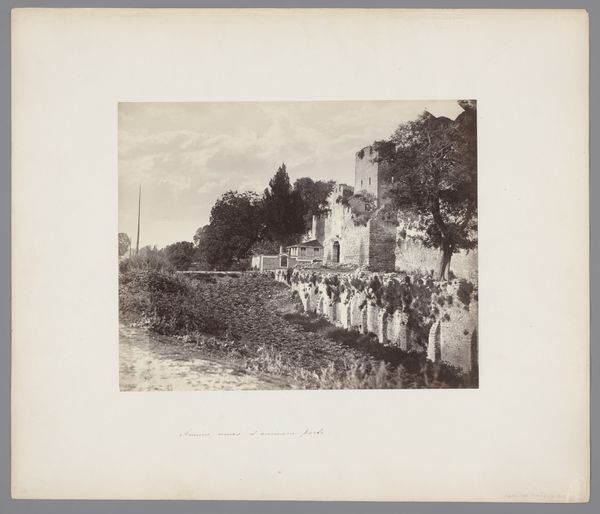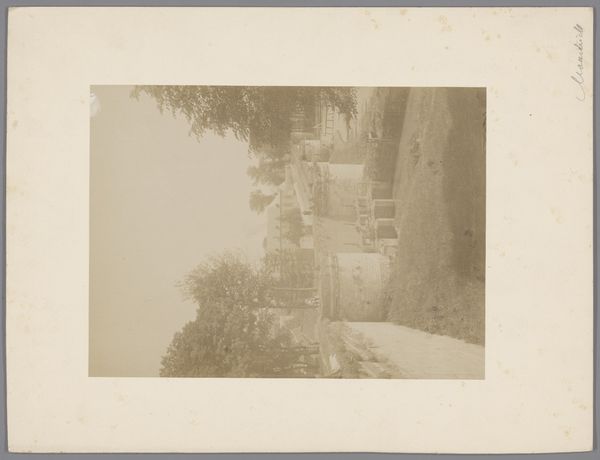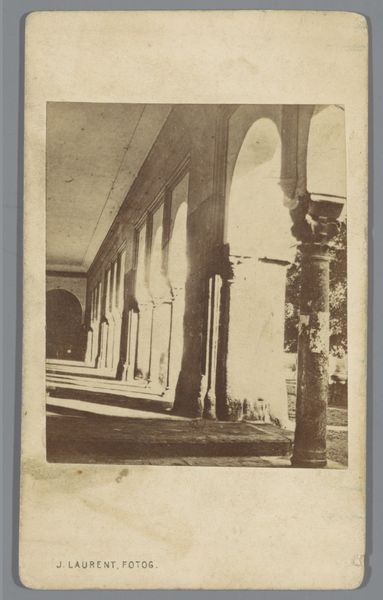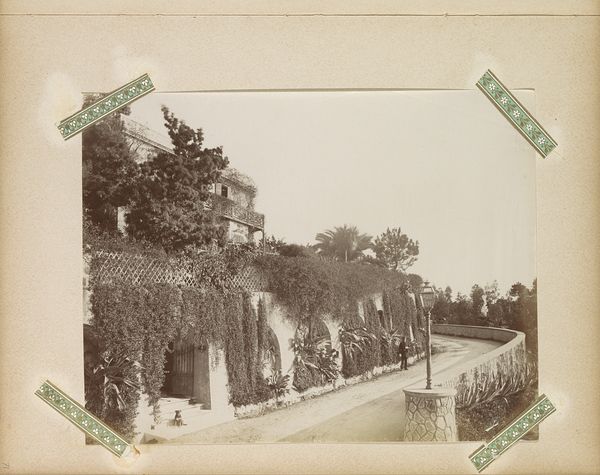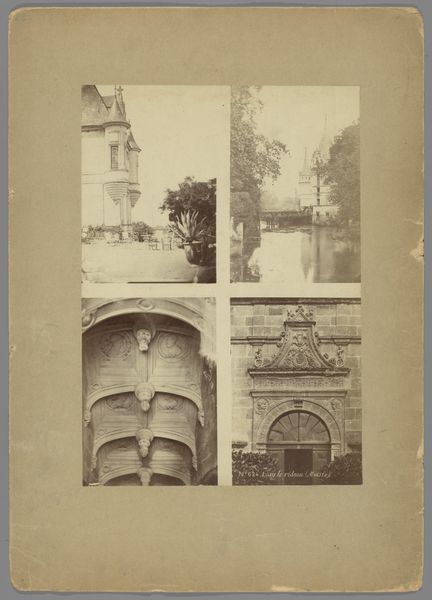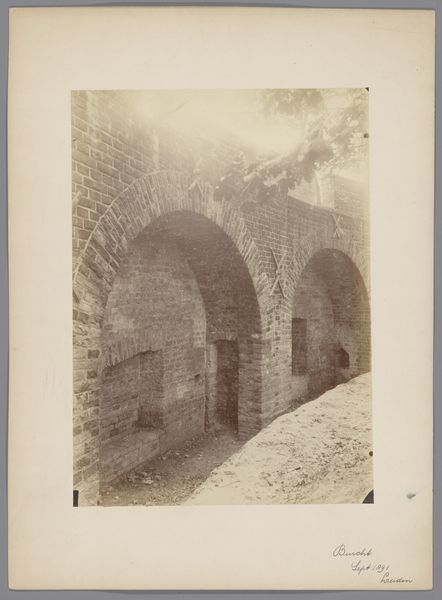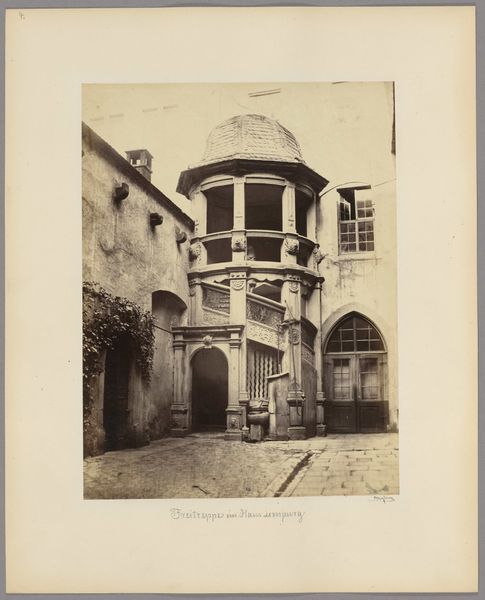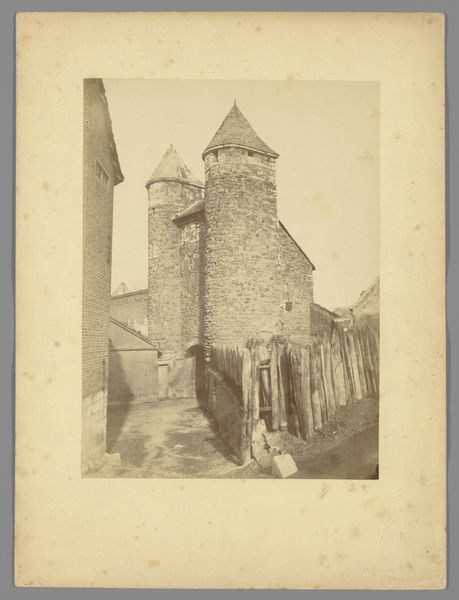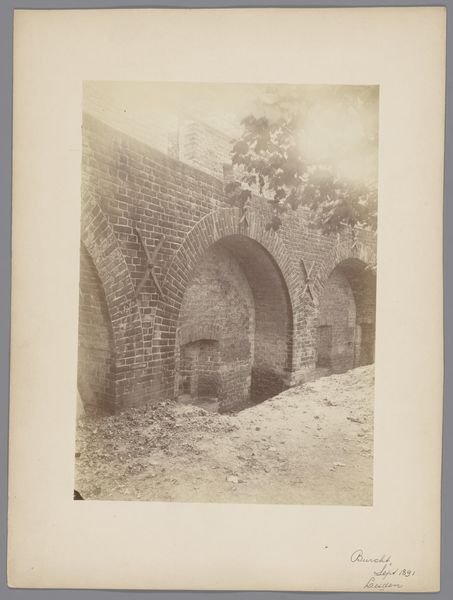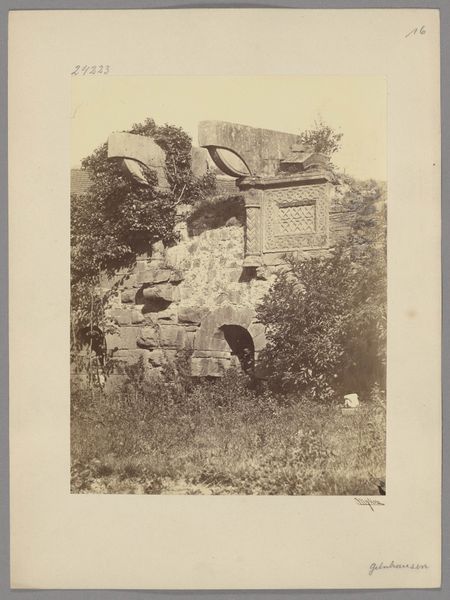
photography, gelatin-silver-print
#
landscape
#
photography
#
gelatin-silver-print
#
italian-renaissance
#
realism
Dimensions: height 340 mm, width 259 mm, height 480 mm, width 320 mm
Copyright: Rijks Museum: Open Domain
Editor: This photograph, "Poort van het Certosa di Pavia, Italië," taken sometime between 1851 and 1880 by Pompeo Pozzi, captures a striking gateway reflected in water. I'm drawn to the stillness, almost a dreamlike quality it possesses. What stands out to you in this image? Curator: The Certosa di Pavia itself is steeped in meaning, a Carthusian monastery commissioned by the Visconti family. This image captures not just architecture, but a crossroads of power, faith, and artistic patronage. Consider the gate: portals often symbolize transitions, and water, of course, represents reflection and the subconscious. Editor: That's fascinating. So the gate isn't just a physical structure? Curator: Precisely. It’s an invitation into another realm, whether spiritual or artistic. The reflections double the architectural detail, prompting consideration. How does doubling contribute to the feeling of a dream you sensed initially? Editor: I guess it makes it feel less grounded, more ethereal. Like it exists on two planes at once. And what about the people depicted? Are they meant to symbolize something, too? Curator: The figures are relatively small. This draws focus on the scale of the monastery itself, dwarfing human presence while simultaneously granting it perspective. I wonder what thoughts the people who encounter the monastery experience? This image, through its specific imagery, holds those emotions for an infinite number of viewers across time. Editor: This has been really helpful. I didn't realize how much could be read into one seemingly simple photograph. Curator: Indeed. The power of the photographic image lies in its capacity to act as both a mirror reflecting the present and a window looking back across history, a keyhole granting us a glimpse of an enduring cultural narrative.
Comments
No comments
Be the first to comment and join the conversation on the ultimate creative platform.

